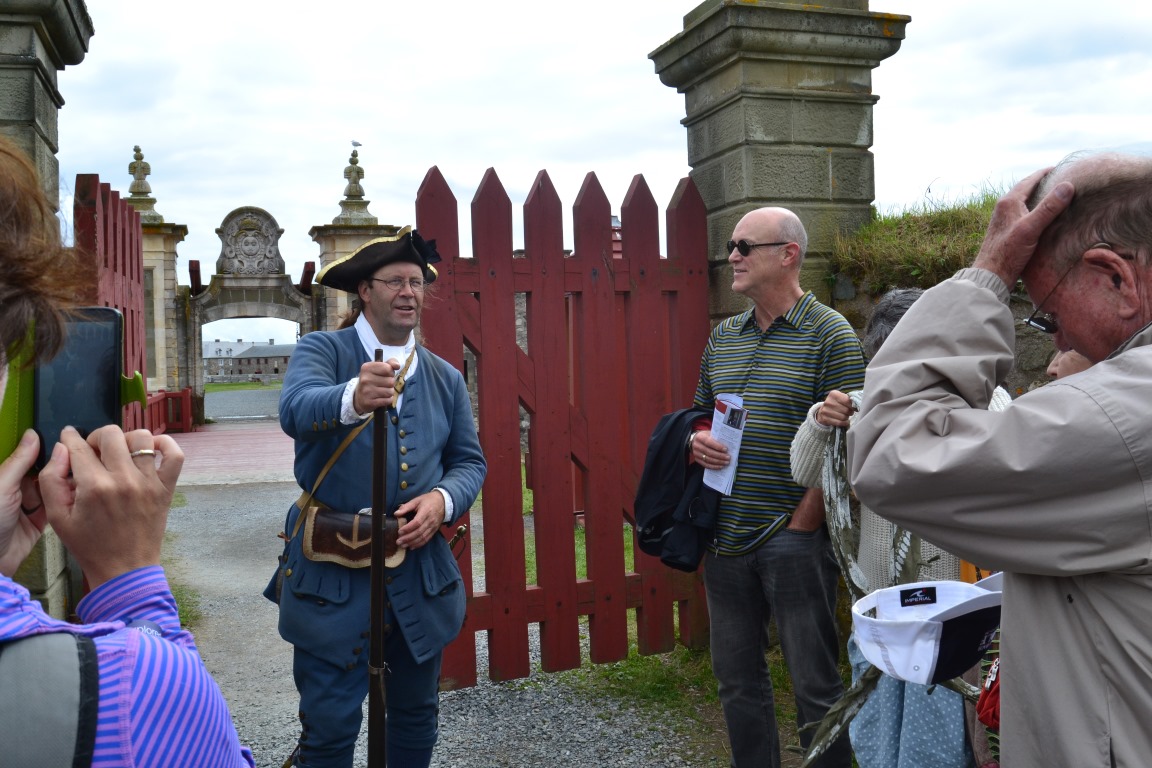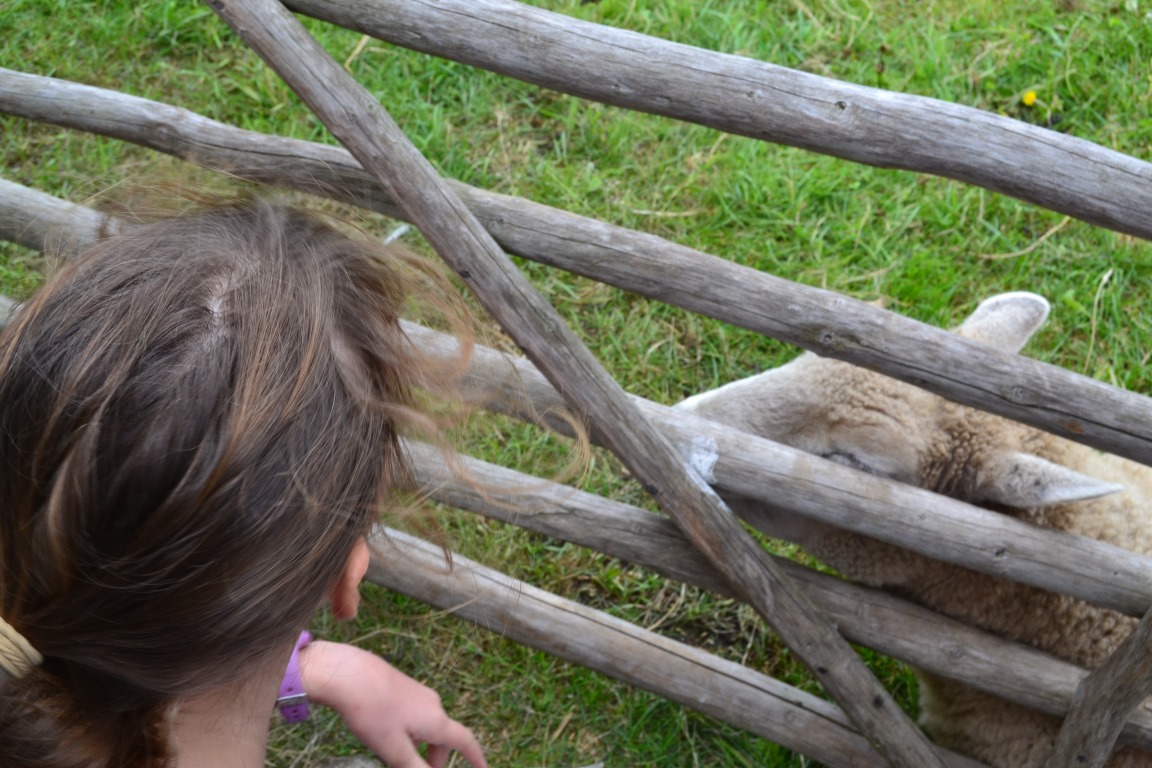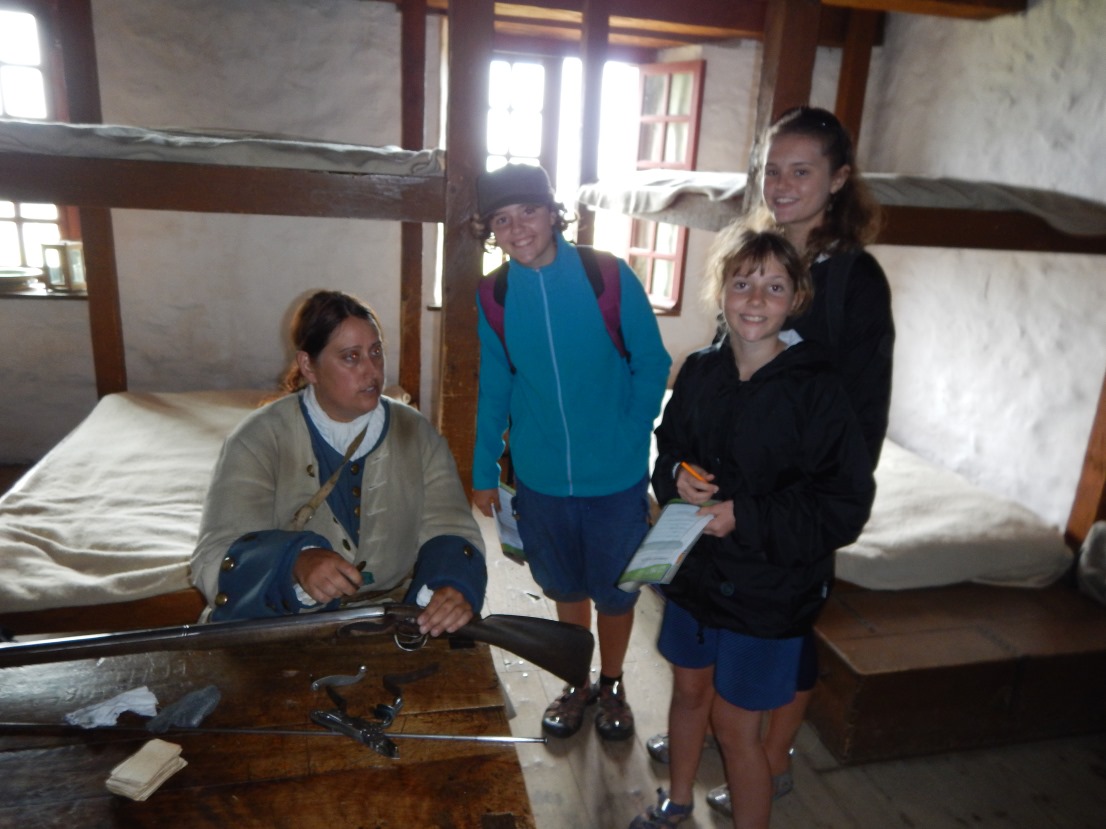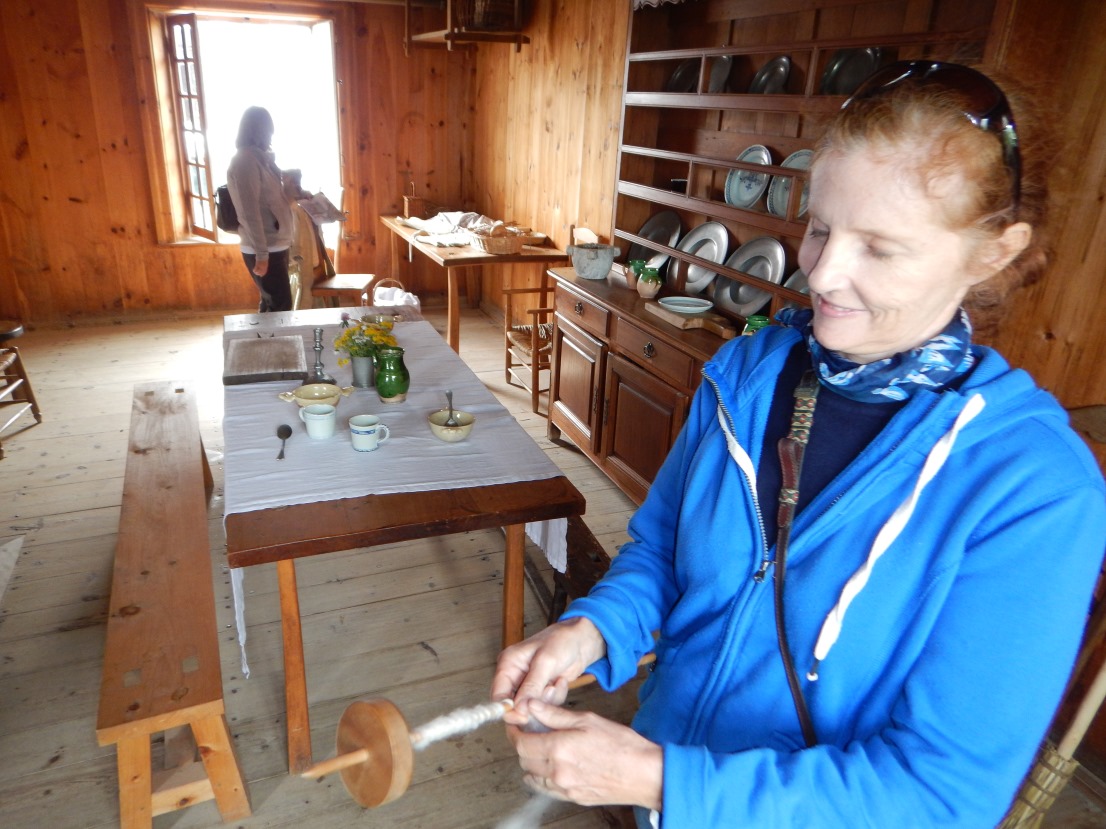The Louisbourg Fortress – by Sophia
-

-
We climbed into a bus and we travelled through time to a place called Louisbourg Fortress. Outside the Fortress we came to a fisherman’s hut. They told us how they used to catch fish and dry it and how they used to live. The Cod that they caught was very big – as tall as my Dad.
-

-
It was a very nice walk to the gates. At the Visitor Center, Karin and I got these activity books. In them we had to mark off things as we did them or experienced them. For example, waves crashing on the shore, smelling baker’s bread, hearing the squeak of a wooden wheelbarrow, hearing a gunshot etc.
-

-
At the gate to the Fortress was a guard. He stopped us to make sure that none of us were spies. He said that there was a spy that slipped into the fortress during the night.
-

-
This is a nice picture of my family at the Inner gate.
-

-
The Fortress area is very big inside. It is one of the biggest museums we visited and one of the most lifelike.
-

-
This is a picture of a sheep that would NOT “Baaaah” for me so that I could tick it off in my book. Luckily his comrade did “Baaaaah”
-

-
Here we are in the Smith’s house. What I liked about this museum was that you can ask anyone a question about the things in the room and they will answer you. They always explain what things are by telling stories about what happened in the past as if it was still then. In the picture the Smithy is pulling a lever. This lever is attached to a big thing that blows air into the fire and makes the fire hotter.
-

-
This is the Bakery. Here you can actually buy fresh bread. There are three kinds of bread. The King’s bread is only for the King. It is nice, soft, fluffy, white bread. The Common person’s bread is nice, fluffy, brown bread. The Soldier’s bread has a very hard crust and is very dense. On the shelve at the back there is an example of the size of the soldier’s bread. This had to last for four days! As soon as you broke the hard crust, the bread would become as hard as stone after a day. So, soldiers often shared their bread with 3 companions so that they could have fresh bread every day. We could taste all three kinds (we had to buy it though). As we went out of the bakery, we passed a soldier. He complained that everyone was eating and he didn’t have any. And HE was the one with the gun doing all the work. My Dad gave him the last of the King’s bread we had. He took it and said:”Thank you so much. It has been SIXTEEN years since I last tasted white bread”.
-

-
This soldier told us what a hard life the soldiers at the fortress had. Then he gave us a demonstration on how to shoot a musket. It was very loud – but not as loud as a cannon. I coud tick it off in my book, so I was happy.
-

-
Here we saw where the soldiers used to sleep. They had to share beds. One would be on watch and the other one would be sleeping. Here, the soldier is cleaning his gun. We asked him for his nickname as we had to fill it in the activity book
-

-
This is the kitchen of the inventor’s house. We didn’t see the rest of the house, because there was too much to see and we were behind. In the kitchen we saw gadgets that he made for her to use in her cooking. I am very glad that I live in my time and not in that time.
-

-
Above the fire on the left of the shelf is one of the inventions. When the weight falls, it turns the metal rod attached to it with a pulley, so that the meat could be baked evenly over the fire.
-

-
This is a picture of the courtyard of the Fort. Karin is on the barrier looking down on the courtyard. The tents you can see are for visitors who want to stay overnight. They can do some old fashioned camping and cooking over a fire.
-

-
This criminal was caught stealing. They kept him in a prison cell. He is waiting to be sentenced. But first they will drag him through the streets of thr fortress to the public shaming pole.
-

-
They read out his crime and the punishment from a scroll, very loudly. A lot of it was in French. Afterwards they shouted “Viva la France!”
-

-
My Dad is faking being a prisoner, because he thought it would make a good picture. He was right, so I had to put it in.
-

-
We ate some food in the Commoner’s Inn. They only had spoons and when they served the bread, it was already buttered. We ate out of tin plates and bowls.
-

-
Here is one of the things that I had wanted to do for a very long time. Finally, in this museum, I had the chance. It is to write with a quill pen and ink.
-

-
It was very easy to get too much ink on the pen and that makes a big blop. Other than that, it was not too hard and also fun.
-

-
My Mom is trying her hand at spinning.
-

-
This is where the lady sat that made handmade lace. She was just absent for the photo, but she gave us a very nice demonstration.
-

-
As you can see, this is what the harbour looked like in the days that the Fortress was in operation. I don’t know about you, but to me it looks pretty scary. Sooo many big boats in such a small area – all at once! And none of them have engines, only sails.
-

-
These two following pctures show how the people dressed up for the museum. They could all speak English and French very well.
-

-
As you can see, a crowd gathered for the last firing of the cannon to end the day.
-

-
Sadly, we never took a picture of the firing of the cannon, but here is the procession of the soldiers that will light the cannon. The two in front keep the beat and the next two prepare and fire the cannon. The last one (in blue) is an apprentice training for the position. Thus ended our day in Fortress Louisbourg. We caught the last bus back to our time.


























3 comments
Hey The Fun Sails…
Do you guys still have enough boerewors after your trini departure..
Wishing you all the best with the Travels
Keep well.
Lebo
Thanks, Lebo
All our boerewors is long gone.
We tried to ration it as carefully as possible, but it was so good that it could never last for long enough!
All the best to you
– Frans
Sophia, my favourite living history museum is Louisburg. Thank you for bringing back great memories with your photos and interesting captions. My favourite places were the kitchens and the Commoners Inn.